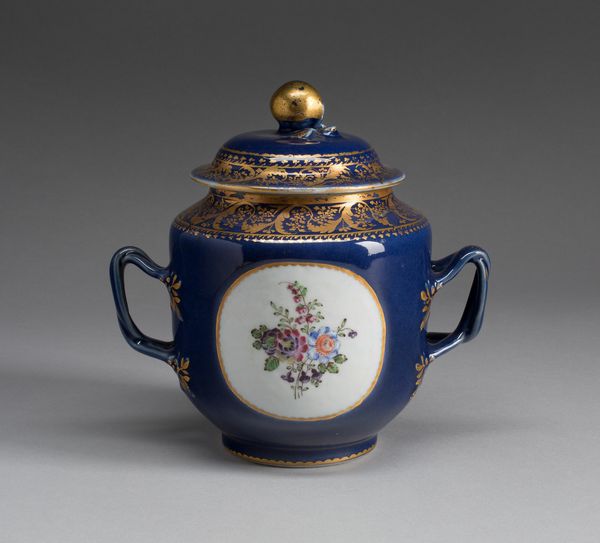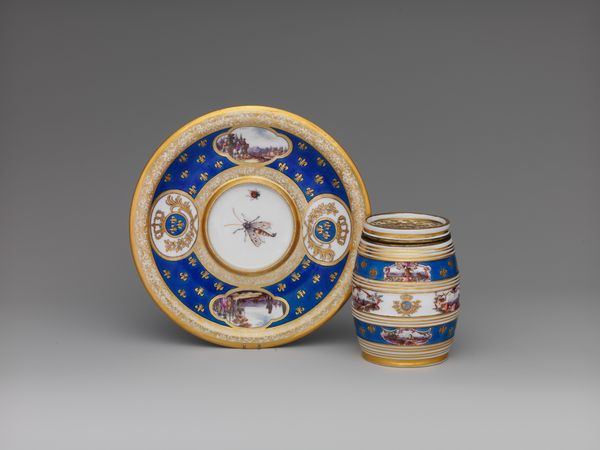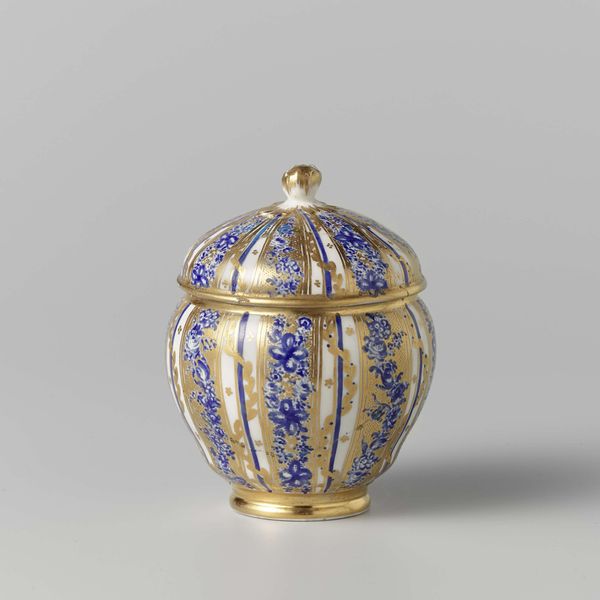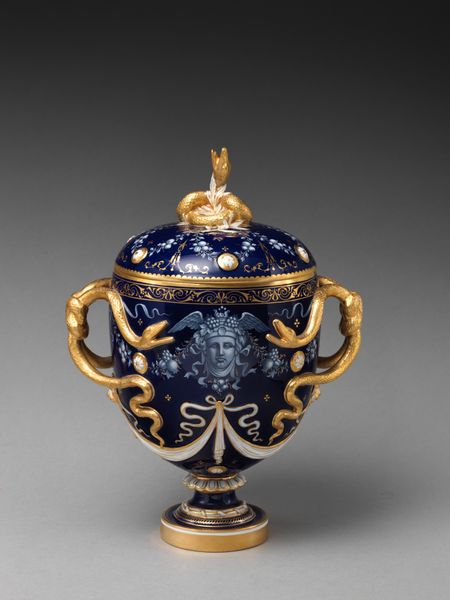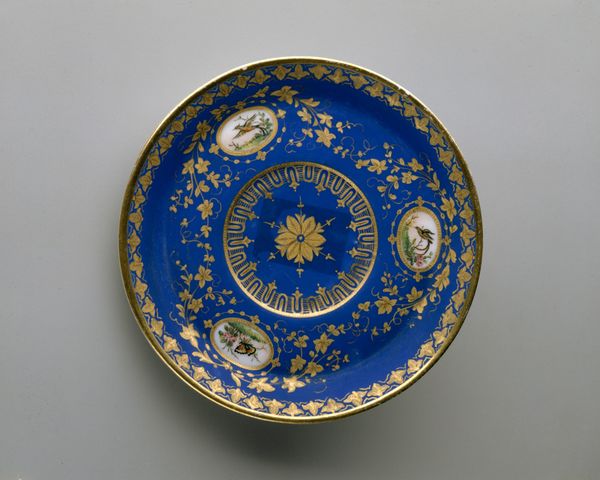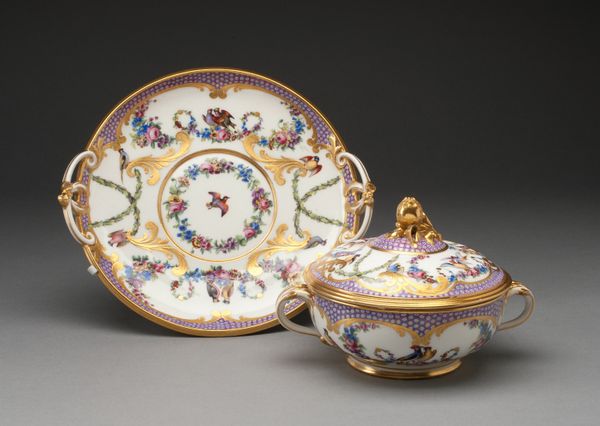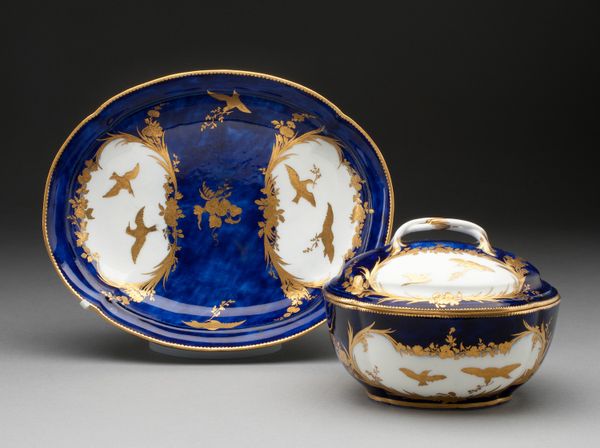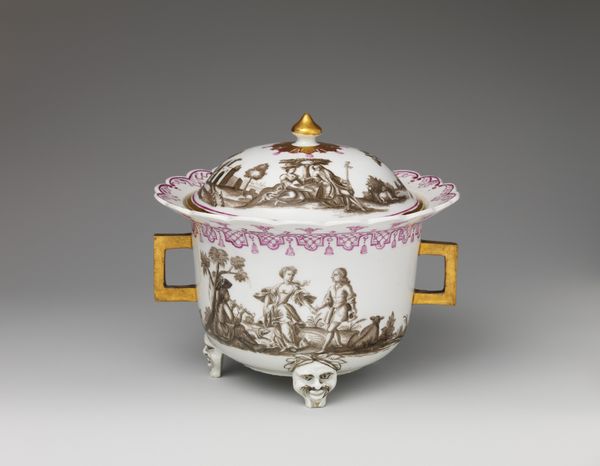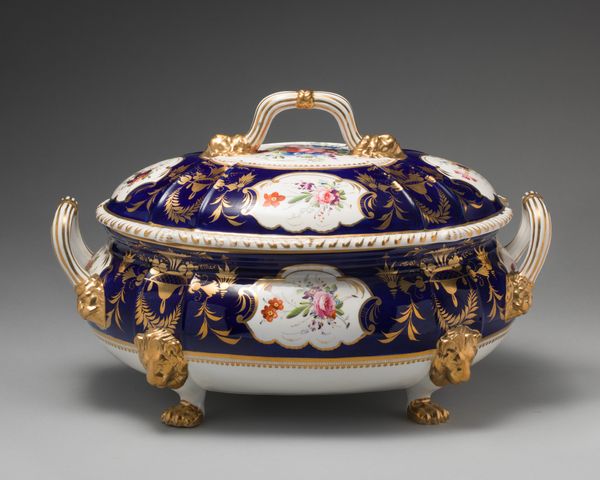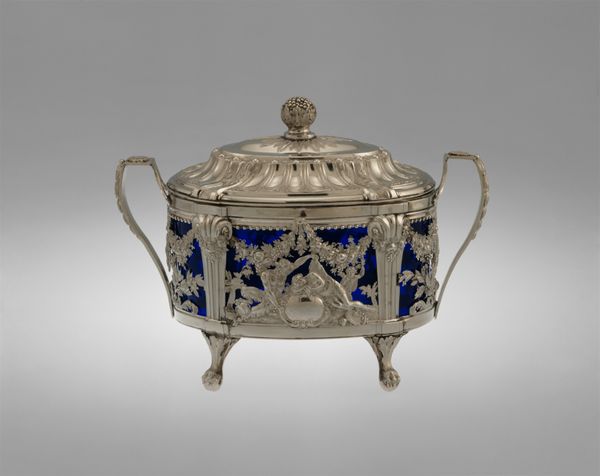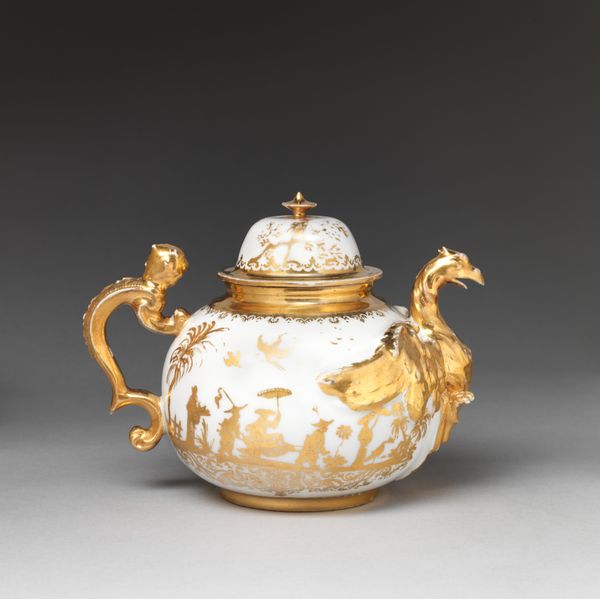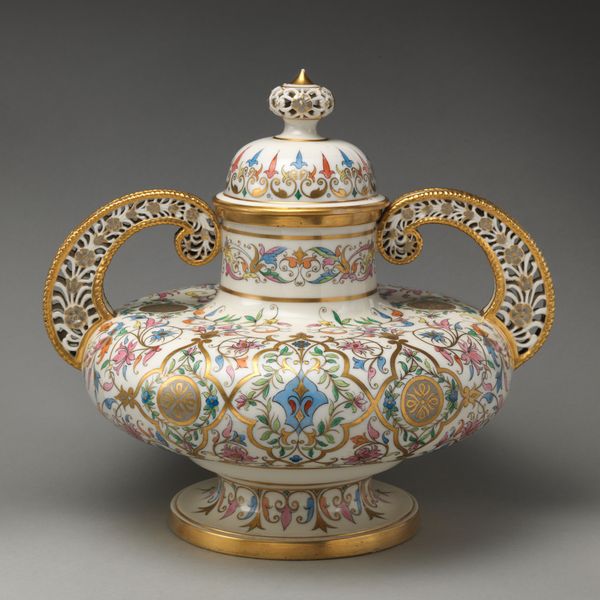
Covered Bowl and Stand (Ecuelle de la toilette) 1784
0:00
0:00
Dimensions: Bowl and cover: H. 11.5 cm (4 9/16 in.); Bowl: L. 20.4 cm (8 1/16 in.); Stand: diam. 27.5 cm (10 7/8 in.)
Copyright: Public Domain
Editor: Here we have a porcelain "Covered Bowl and Stand (Ecuelle de la toilette)" made in 1784 by the Manufacture nationale de Sèvres. The dark blue and gold really jump out. It looks… regal. What do you make of it? Curator: Indeed. The use of color isn’t just aesthetic. That deep blue, called bleu lapis, would immediately signify luxury and status. The gold imagery, very meticulously applied, echoes classical themes, which brings in ideas of power and sophistication tied to the ancient world. Notice anything specific about those figures? Editor: I see... classical figures, right? On the plate there’s one who’s holding scales. Is that supposed to be Justice? Curator: Precisely. Justice, along with depictions of putti and other symbolic figures, acted as emblems. Can you see how their repetition around the bowl and stand works like a narrative, continually reinforcing ideas of wealth, justice, and a kind of divine right? Editor: It’s like they're constructing a visual argument for authority through symbols. Does the ‘toilette’ part mean this was for makeup? Curator: Yes, items like this weren’t just functional; they were integral to rituals of courtly life. Appearance and presentation reinforced the established hierarchies. Imagine this piece as a tool, reinforcing social standing and power through daily routines. Editor: So, this bowl wasn't just about washing one’s face but communicating your place in society? Curator: Exactly. And reflecting back on this object now, we might ask what symbols we employ today to communicate status, wealth, or power? Editor: That’s really made me think about the items we choose to display in our lives. Curator: Indeed, material culture carries messages through time and space.
Comments
No comments
Be the first to comment and join the conversation on the ultimate creative platform.
